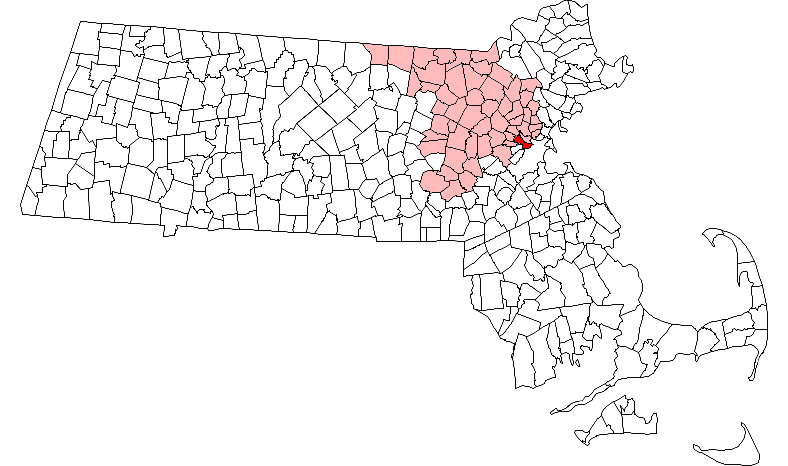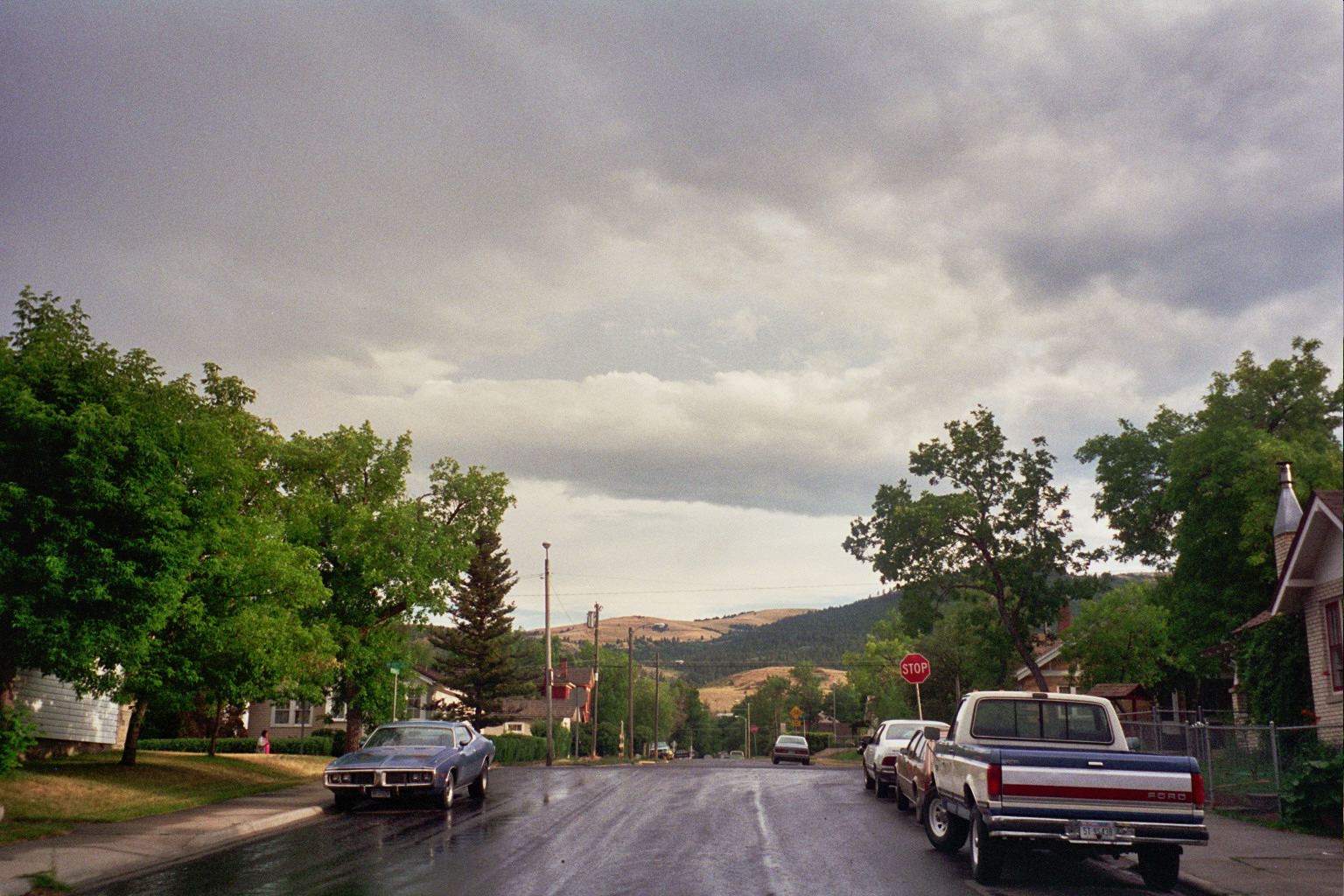|
The Lowell
The Lowell is an historic triple decker apartment house on 33 Lexington Avenue in Cambridge, Massachusetts. Built in 1900 to a design by local architect John Hasty, it is a rare multiunit building in the Brattle Street area outside Harvard Square. The Colonial Revival building has a swan's neck pediment above the center entry, which is echoed above the central second story windows. Doric pilasters separate the bays of the front facade, and the building distinctively has side porches, giving it added horizontal massing. It was built before the decision was made to locate the electrified trolleys on Mount Auburn Street instead of Brattle (under pressure from wealthy Brattle Street residents), a decision that reduced interest in building more multiunit housing in that area. The building was listed on the National Register of Historic Places in 1983. See also *National Register of Historic Places listings in Cambridge, Massachusetts This is a list of sites listed on the ... [...More Info...] [...Related Items...] OR: [Wikipedia] [Google] [Baidu] |
Cambridge, Massachusetts
Cambridge ( ) is a city in Middlesex County, Massachusetts, United States. It is a suburb in the Greater Boston metropolitan area, located directly across the Charles River from Boston. The city's population as of the 2020 United States census, 2020 U.S. census was 118,403, making it the most populous city in the county, the List of municipalities in Massachusetts, fourth-largest in Massachusetts behind Boston, Worcester, Massachusetts, Worcester, and Springfield, Massachusetts, Springfield, and List of cities in New England by population, ninth-most populous in New England. The city was named in honor of the University of Cambridge in Cambridge, England, which was an important center of the Puritans, Puritan theology that was embraced by the town's founders. Harvard University, an Ivy League university founded in Cambridge in 1636, is the oldest institution of higher learning in the United States. The Massachusetts Institute of Technology (MIT), Lesley University, and Hult Inte ... [...More Info...] [...Related Items...] OR: [Wikipedia] [Google] [Baidu] |
Triple Decker
A three-decker is the U.S. term for a type of vertical triplex apartment building. These detached three-story buildings are typically of light-framed, wood construction, where each floor usually consists of a single apartment. Both stand-alone and semi-detached versions are common. During the late 19th and early 20th centuries, tens of thousands of three-deckers were constructed, mostly in New England, as a cheap means of housing the thousands of newly arrived immigrant workers who filled the region’s factories. A typical tree-decker contained three apartments, usually with identical floor plans. The three-decker apartment house was seen as an alternative to narrow single-unit row-housing built in other cities of Northeastern United States during this period, such as New York City, Boston, Philadelphia, Baltimore, and Washington, D.C. Originally, extended families often lived in two or all three floors. Some three-deckers were divided into six units. Three deckers of ... [...More Info...] [...Related Items...] OR: [Wikipedia] [Google] [Baidu] |
Brattle Street (Cambridge, Massachusetts)
Brattle Street in Cambridge, Massachusetts, Cambridge, Massachusetts, called the "King's Highway" or "Tory Row" before the American Revolutionary War, is the site of many buildings of historical interest, including the modernist glass-and-concrete building that housed the Design Research (store), Design Research store, and a Georgian mansion where George Washington and Henry Wadsworth Longfellow both lived (though at different times), as well as John Vassall Jr., John Vassall and his seven slaves including Darby Vassall. Samuel A. Eliot (minister), Samuel Atkins Eliot, writing in 1913 about the seven Colonial mansions of Brattle Street's "Tory Row," called the area "not only one of the most beautiful but also one of the most historic streets in America." "As a fashionable address it is doubtful if any other residential street in this country has enjoyed such long and uninterrupted prestige."Survey of Architectural History in Cambridge: Old Cambridge, 1973 , Cambridge Historical C ... [...More Info...] [...Related Items...] OR: [Wikipedia] [Google] [Baidu] |
Harvard Square
Harvard Square is a triangular plaza at the intersection of Massachusetts Avenue (Boston), Massachusetts Avenue, Brattle Street (Cambridge, Massachusetts), Brattle Street and John F. Kennedy Street near the center of Cambridge, Massachusetts, Cambridge, Massachusetts, United States. The term "Harvard Square" is also used to delineate the business district and Harvard University surrounding that intersection, which is the historic center of Cambridge. Adjacent to Harvard Yard, the historic heart of Harvard University, the Square (as it is sometimes called, locally) functions as a commercial center for Harvard students, as well as residents of western Cambridge, the western and northern neighborhoods and the inner suburbs of Boston. The Square is served by Harvard (MBTA station), Harvard station, a major Massachusetts Bay Transportation Authority, MBTA Red Line (MBTA), Red Line Rapid transit, subway station and a bus transportation hub. The name "Harvard Square" can also refer to ... [...More Info...] [...Related Items...] OR: [Wikipedia] [Google] [Baidu] |
National Register Of Historic Places
The National Register of Historic Places (NRHP) is the Federal government of the United States, United States federal government's official United States National Register of Historic Places listings, list of sites, buildings, structures, Historic districts in the United States, districts, and objects deemed worthy of Historic preservation, preservation for their historical significance or "great artistic value". The enactment of the National Historic Preservation Act (NHPA) in 1966 established the National Register and the process for adding properties to it. Of the more than one and a half million properties on the National Register, 95,000 are listed individually. The remainder are contributing property, contributing resources within historic district (United States), historic districts. For the most of its history, the National Register has been administered by the National Park Service (NPS), an agency within the United States Department of the Interior. Its goals are to ... [...More Info...] [...Related Items...] OR: [Wikipedia] [Google] [Baidu] |
National Register Of Historic Places Listings In Cambridge, Massachusetts
This is a list of sites listed on the National Register of Historic Places in Cambridge, Massachusetts. This is intended to be a complete list of the properties and districts on the National Register of Historic Places in Cambridge, Massachusetts, United States. Latitude and longitude coordinates are provided for many National Register properties and districts; these locations may be seen together in an online map. There are 207 properties and districts listed on the National Register in Cambridge, including 18 National Historic Landmarks. Current listings Former listing See also *Blue plaque *List of National Historic Landmarks in Massachusetts * National Register of Historic Places listings in Massachusetts *National Register of Historic Places listings in Mid ... [...More Info...] [...Related Items...] OR: [Wikipedia] [Google] [Baidu] |
Residential Buildings Completed In 1900
A residential area is a land used in which housing predominates, as opposed to industrial and commercial areas. Housing may vary significantly between, and through, residential areas. These include single-family housing, multi-family residential, or mobile homes. Zoning for residential use may permit some services or work opportunities or may totally exclude business and industry. It may permit high density land use or only permit low density uses. Residential zoning usually includes a smaller FAR (floor area ratio) than business, commercial or industrial/manufacturing zoning. The area may be large or small. Overview In certain residential areas, especially rural, large tracts of land may have no services whatever, such that residents seeking services must use a motor vehicle or other transportation, so the need for transportation has resulted in land development following existing or planned transport infrastructure such as rail and road. Development patterns may be regul ... [...More Info...] [...Related Items...] OR: [Wikipedia] [Google] [Baidu] |





